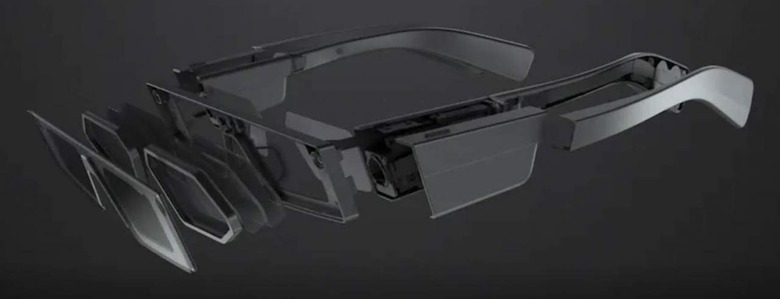Snap's AR Spectacles Make Reality Look Magical, But There's A Catch
During an event today, Snap CEO Evan Spiegal introduced the company's first pair of augmented reality glasses, a model capable of overlaying digital objects and experiences over the real world. The AR glasses look distinctly different when contrasted with the consumer-level Spectacles smart glasses Snap previously launched, and they pack quite a bit more tech.
The fourth-generation Snapchat Spectacles were revealed during the 2021 Snap Partner Summit. The technology works similar to the AR effects you've likely already experienced with your smartphone, but with one key difference: instead of holding your phone in front of your face, the glasses do all of the work, enabling you to simply stare at the augmented world around you.
The latest Spectacles feature a thick black frame packing stereo speakers, four integrated microphones, and a touchpad. Users tap the touchpad to pull up a lens carousel visible over the natural environment. Users can then scroll through the list of available lenses and select one to active it.

The AR effect then appears over the user's environment, naturally interacting with it as they look around. Snap's demonstration of this technology features a colorful nature scene with a flower and butterfly placed over a real-world field. The butterfly was then demonstrated landing on Spiegal's hand after he extended it into the AR scene.
The new Spectacles include 3D Waveguide displays, two front-facing RGB cameras, and they're capable of 2,000 nits brightness. The model features full Lens Studio integration, enabling creators to build their own Lenses for the AR glasses. Snap says the new Spectacles have 15ms motion-to-photon latency, as well as six degrees of freedom, surface tracking, hand tracking, and marker tracking.
Augmented reality glasses appear to be the eventual 'next big thing' when it comes to consumer technology, but don't expect Snap's latest Spectacles to introduce you to this unique reality. The company won't make these AR glasses available for mass production, instead offering them only to select creators.
That may be disappointing, but the reality is that the glasses likely aren't ready to please the average consumer — for example, they currently have only around half an hour of battery life. As well, the appearance is still large and unsightly.
